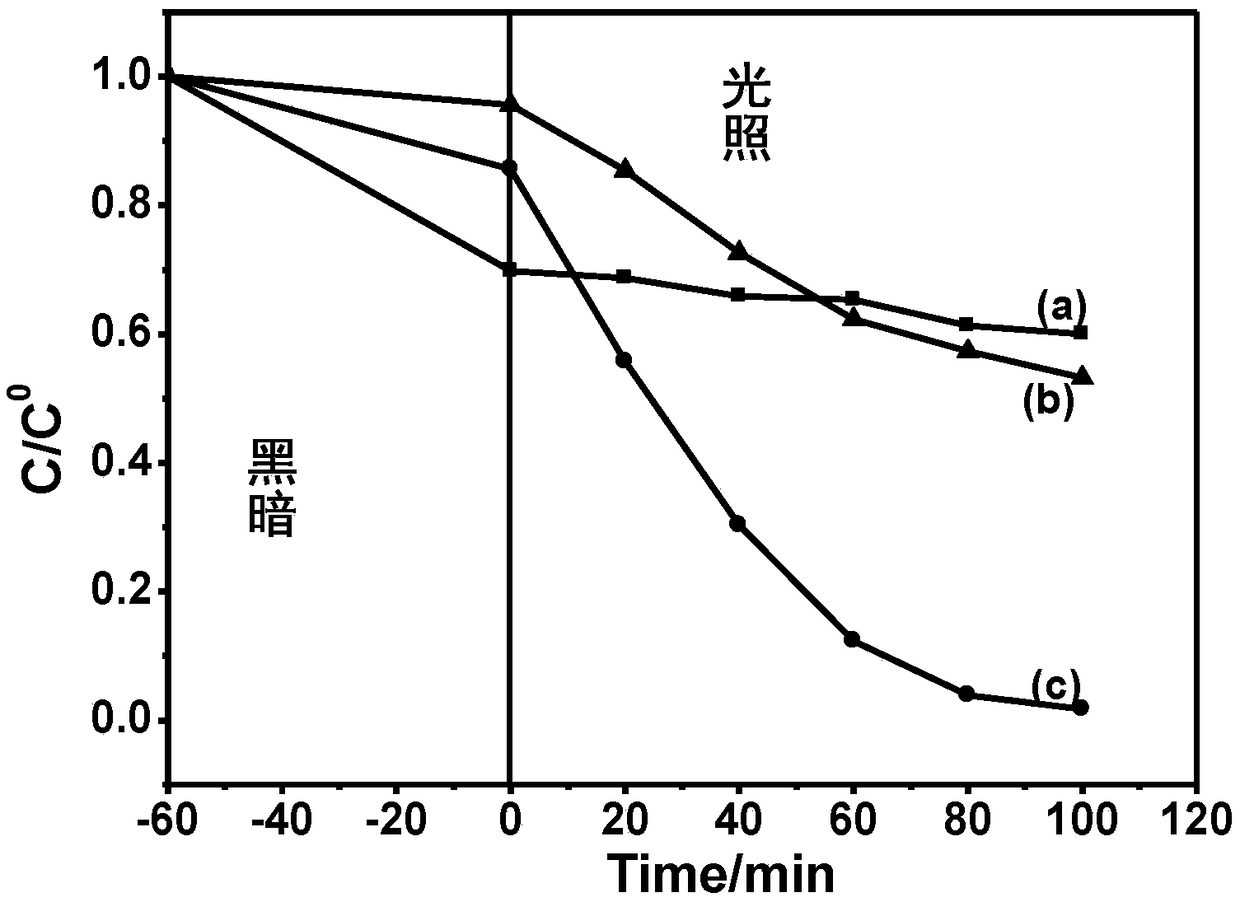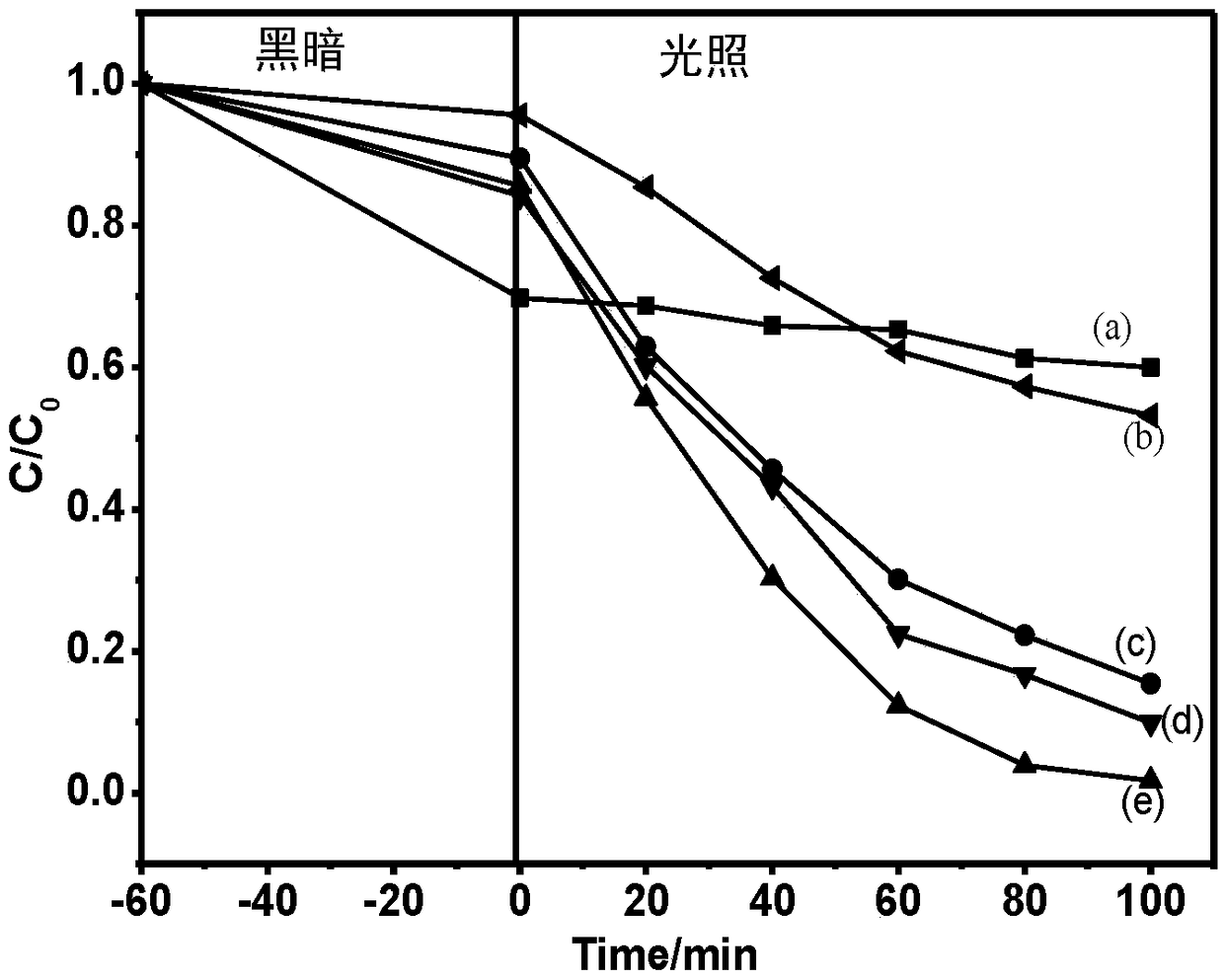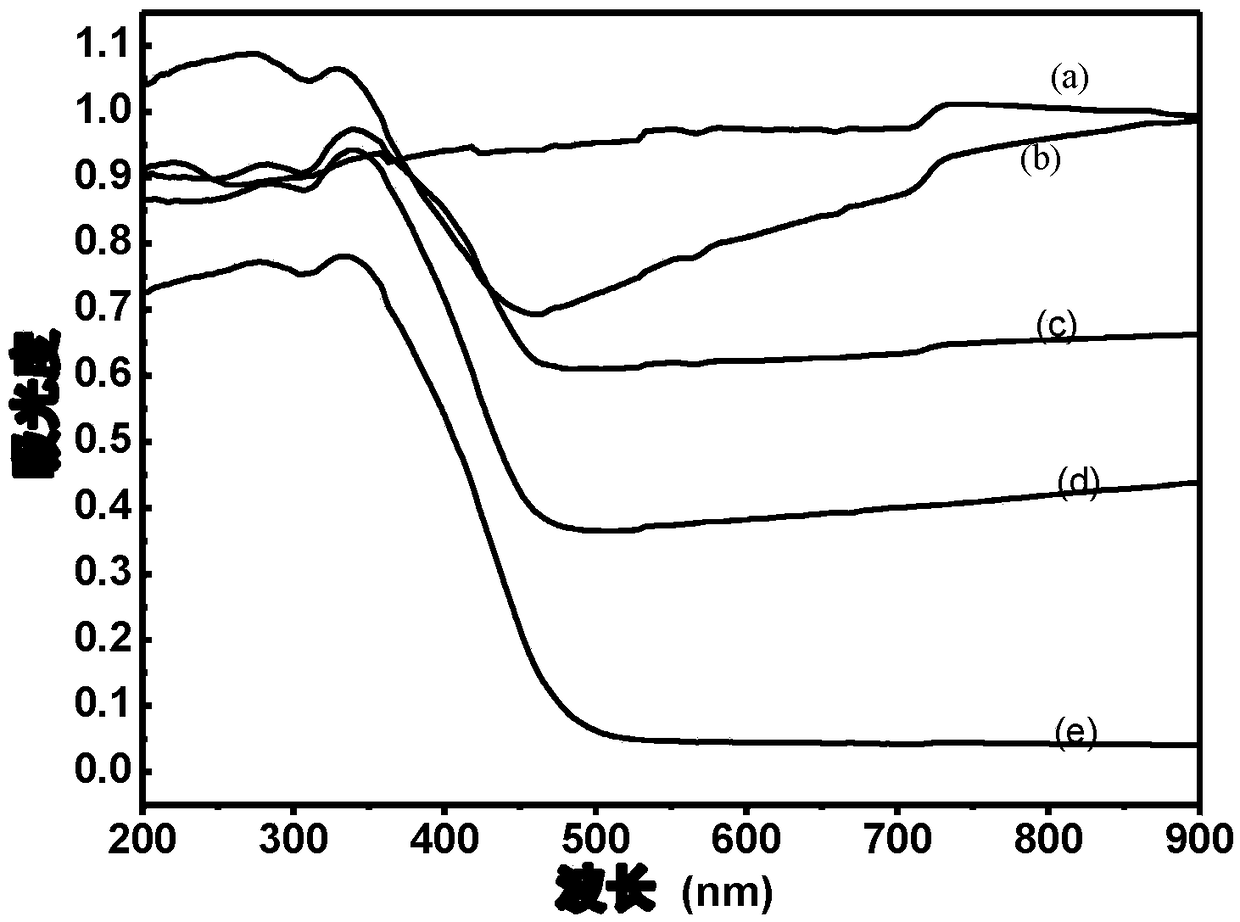Bismuth molybdate graphene aerogel compound and preparation method thereof
A technology of graphene airgel and graphene hydrogel, which is applied in chemical instruments and methods, catalyst activation/preparation, water pollutants, etc., can solve the problems of low visible light absorption, hindering practical application, and low specific surface area. Achieve the effects of improving chemical action, prolonging life, and improving adsorption capacity
- Summary
- Abstract
- Description
- Claims
- Application Information
AI Technical Summary
Problems solved by technology
Method used
Image
Examples
Embodiment 1
[0023] Example 1: Preparation of reduced graphene oxide airgel (GA) and photodegradation of pollutants
[0024](1) Synthesis of reduced graphene oxide airgel (GA): 10 mL of GO (2 mg / mL) suspension was sonicated for 1 hour at room temperature to form a homogeneous solution. Then 0.04 g of L-lysine was added to the prepared GO solution under vigorous stirring and stirred for 1 h. Afterwards, the solution was transferred to a 50-mL polytetrafluoroethylene-lined autoclaved hydrothermal reactor and heated at 160 °C for 10 h. After cooling to room temperature, a 3D reduced graphene oxide hydrogel was obtained, which was immersed in deionized water and absolute ethanol several times, and the resulting composite was further freeze-dried at −50 °C for 24 h. Finally, a 3D independent mesoporous product of reduced graphene oxide airgel (GA) was obtained;
[0025] (2) Photodegradation of organic pollutants by reduced graphene oxide airgel (GA): Add reduced graphene oxide airgel (GA) to ...
Embodiment 2
[0026] Embodiment 2: Pure Bi 2 MoO 6 Preparation and Photodegradation of Pollutants
[0027] (1) Pure Bi 2 MoO 6 Synthesis of : at room temperature, 0.15g of Bi(NO 3 ) 3 .5H 2 O and 0.025g (NH 4 ) 6 Mo 7 o 24 .4H 2 O was dissolved in 10 mL of deionized water, sonicated at room temperature for 1 h (referred to as solution A), and then 0.04 g of L-lysine was added dropwise to solution A under vigorous stirring and stirred for 1 hour. Afterwards, the solution was transferred to a 50-mL polytetrafluoroethylene-lined autoclaved hydrothermal reactor and heated at 160 °C for 10 h. After cooling to room temperature, it was immersed in deionized water and absolute ethanol several times, and the resulting product was further freeze-dried at −50 °C for 24 h. Finally, to obtain pure Bi 2 MoO 6 ;
[0028] Pure Bi 2 MoO 6 Photodegradation of organic pollutants: pure Bi 2 MoO 6 Add it to 60mL of methylene blue aqueous solution with a concentration of 10mg / L, stir in the da...
Embodiment 3
[0029] Example 3: 3D Bi 2 MoO 6 / Reduced graphene oxide airgel composite synthesis and photodegradation of organic pollutants
[0030] (1) Bi 2 MoO 6 / Synthesis of reduced graphene oxide airgel composite: 10 mL of GO (2.0 mg / mL) suspension was sonicated for 1 hour at room temperature to form a homogeneous solution. At the same time, 0.15g of Bi(NO 3 ) 3 .5H 2 O and 0.025g (NH 4 ) 6 Mo 7 o 24 .4H 2 O was dissolved in 10 mL deionized water, sonicated for 1 h at room temperature (referred to as solution A), and then the prepared GO solution and 0.04 g L-lysine were added dropwise to solution A under vigorous stirring and stirred for 1 h. Afterwards, the solution was transferred to a 50-mL polytetrafluoroethylene-lined autoclaved hydrothermal reactor and heated at 160 °C for 10 h. After cooling to room temperature, three-dimensional (3D) Bi 2 MoO 6 / reduce the graphene oxide hydrogel composite, and after immersing it in deionized water and absolute ethanol several ti...
PUM
 Login to View More
Login to View More Abstract
Description
Claims
Application Information
 Login to View More
Login to View More - R&D
- Intellectual Property
- Life Sciences
- Materials
- Tech Scout
- Unparalleled Data Quality
- Higher Quality Content
- 60% Fewer Hallucinations
Browse by: Latest US Patents, China's latest patents, Technical Efficacy Thesaurus, Application Domain, Technology Topic, Popular Technical Reports.
© 2025 PatSnap. All rights reserved.Legal|Privacy policy|Modern Slavery Act Transparency Statement|Sitemap|About US| Contact US: help@patsnap.com



